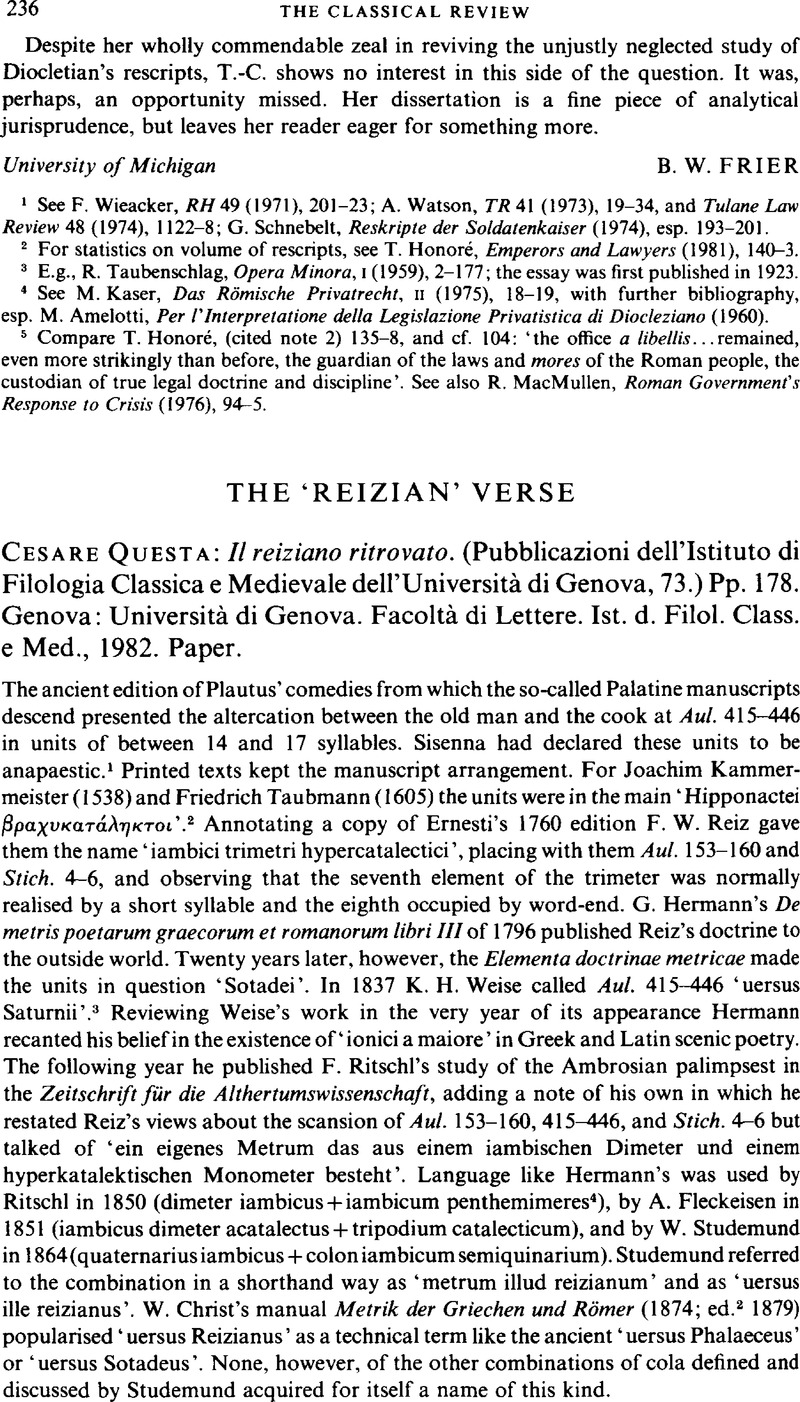Published online by Cambridge University Press: 16 February 2009

1 See Rufinus, Gramm. Lat. 6. 561. 8–10 in Aulularia sic, ‘haec scaena anapaestico metro est. sed concisa sunt, ut non intellegas, Studemund, De cant. p. 96, and Questa, , RFIC 102 (1974), 179Google Scholar. Hermann, , Elementa, p. 411Google Scholar, and Ritschl, , Parerga, p. 384Google Scholar, had referred Sisenna's comment to vv. 713–730.
2 For Hipponax as the creator of the catalectic iambic tetrameter see Rufinus, Gramm. Lat. 6. 560. 7.
3 Cf. also Fritzsche, T., Philologus 34 (1876), 186–191Google Scholar. Some ancient grammarians interpreted the verses of Naevius' Carmen Belli Poenici as ‘iambici senarii hypercatalectici’ (see Ps. Ascon. Cic. Verr. 1. 29, p. 215. 19–20 Stangl, Diomedes, Gramm. Lat. 1. 512. 18–22).
4 For this term see Marius Victorinus, Gramm. Lat. 6. 105. 8.
5 Hence we may expect the verses to be set out in Questa's promised edition of the ‘cantica’ in the manner of Lindsay rather than in that of Leo. What would settle such an issue is unclear. Against Q.'s view one could put (at the risk of being accused of having no ‘sense of metre’) the absence of synaloephe between elements 8 and 9, the extreme lateness of the incision, the absolute regularity of this incision (contrast the alleged Greek ‘Reizian’ verse, Aristoph. Ach. 840–41), and the unvarying realisation of elements 7 and 8 with a short syllable followed by a long. Ritschl was justly rather impatient with such issues (cf. the note on Trin. 254–6 in his 1871 edition of this play).
6 Cf. Havet, L., REL 19 (1941), 203–216.Google Scholar
7 Leo and Wilamowitz are called the ‘Dioscuri’ of Göttingen (p. 123); a ‘Prussian order’ is said to ‘reign’ in some editions of Plautine plays (p. 109; cf. p. 156); the unfortunate Spengel is even accused of excogitating a ‘final solution’ for a set of textual problems (p. 114).
8 In Diodati's Bible Luke 15. 24 ἶν ⋯πολωλώς κα⋯ εὑρ⋯θη is translated as ‘era perduto, ed è stato ritrovato’.
9 Cf. Longinus, , Proll. Heph. p. 84 Consbruch.Google Scholar
10 Zeitschr. f. d. Alt. (1838), 759.
11 Cf. Q.'s, announcement in Flores, E. (ed.), La critica testuale greco-latina, oggi: metodi e problemi (Rome, 1981), p. 284.Google Scholar
12 Cf. p. 96: ‘Appena “riscoperto” o, piuttosto, meglio collocato fra i metri usati da Plauto, il versus reizianus…’
13 Cf. the talk on p. 114 of Leo's ‘scoperta’ of the true nature of the second part of the ‘Reizian’ verse.